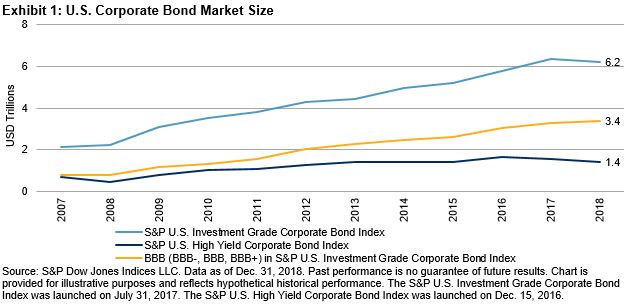The commodities bull market party continued in April. The S&P GSCI was up 2.8% for the month and up 18.2% YTD. The Dow Jones Commodity Index (DJCI) was flat in April and up 7.6% YTD, reflecting its lower energy weighting. Petroleum prices, once again, were the standout drivers in the broad commodity index in April, as they have been all year. Agriculture and industrial metal prices dragged on overall performance for the month.
Oil prices continued to surge in April following the decision by the U.S administration to ban all Iranian oil purchases after May 1, 2019, ending sanction exemptions that had been in place for eight nations since last November. The S&P GSCI Petroleum ended the month up 7.0% and up 35.9% YTD. The intensity of supply disruptions in the global oil market, ranging from voluntary output cuts by OPEC and its allies to U.S. sanctions on Iran and Venezuela, have to date overwhelmed any concerns regarding sluggish global economic growth and the expectation of further increases in U.S. oil production. Undoubtedly, investor confidence and risk appetite also contributed to Brent crude oil pushing above USD 75 per barrel during the month for the first time since the end of October last year.
The S&P GSCI Industrial Metals gave back a significant proportion of its first quarter gains during April, leaving it up 4.8% YTD. Aluminum remained the laggard among industrial metals, with underperformance driven by expectations that additional aluminum smelting supply will come on stream over the remainder of the year. The S&P GSCI Aluminum fell 6.5% in April. Nickel prices also declined for the month, with the S&P GSCI Nickel down 6% but still up 14.2% YTD. Despite all the electric vehicle excitement in the nickel market, physical demand remains dominated by the Chinese stainless steel sector. Chinese stainless steel production was strong in the first quarter of the year but is forecast to tail off into the second half of 2019, as thin profit margins prompt producers to scale back.
The yellow metal has now given back almost all of its 2019 gains; the S&P GSCI Gold ended April up only 0.1% YTD. A supportive backdrop for risky assets has certainly curtailed investor interest in so-called safe haven assets. The level of attraction of gold for investors over the remainder of 2019 will likely depend heavily on the arc of U.S. interest rate policy and the strength of the U.S. dollar.
Malaise in the agricultural markets persisted in April. The S&P GSCI Kansas Wheat was the worst-performing constituent in the S&P GSCI YTD, down 21.1%. Higher planted area and favorable growing conditions across the major winter wheat production regions in Russia, Europe, and the U.S. suggests that supply will continue to weigh on the market. In the soybean market, there is growing concern that measureable progress on the U.S.-China trade war front has waned and the outbreak of African swine flu (ASF) in China will greatly reduce demand for U.S. soybeans, albeit temporarily. The S&P GSCI Soybeans was down 4.6% in April and 6.6% YTD.
Across the livestock complex, it was a relatively quiet month, with the S&P GSCI Livestock ending the month down 2.6% while holding onto a small yearly gain (1.2%). In contrast to the impressive recovery in hog prices in March, April proved more sedate, with the S&P GSCI Lean Hogs down 0.2% for the month. Hog market participants are torn between the demand opportunities for U.S. pork presented by the outbreak of ASF in China and the ongoing market access restrictions for U.S. pork in key export markets, as well as the risk of ASF spreading beyond China.
The posts on this blog are opinions, not advice. Please read our Disclaimers.





















































